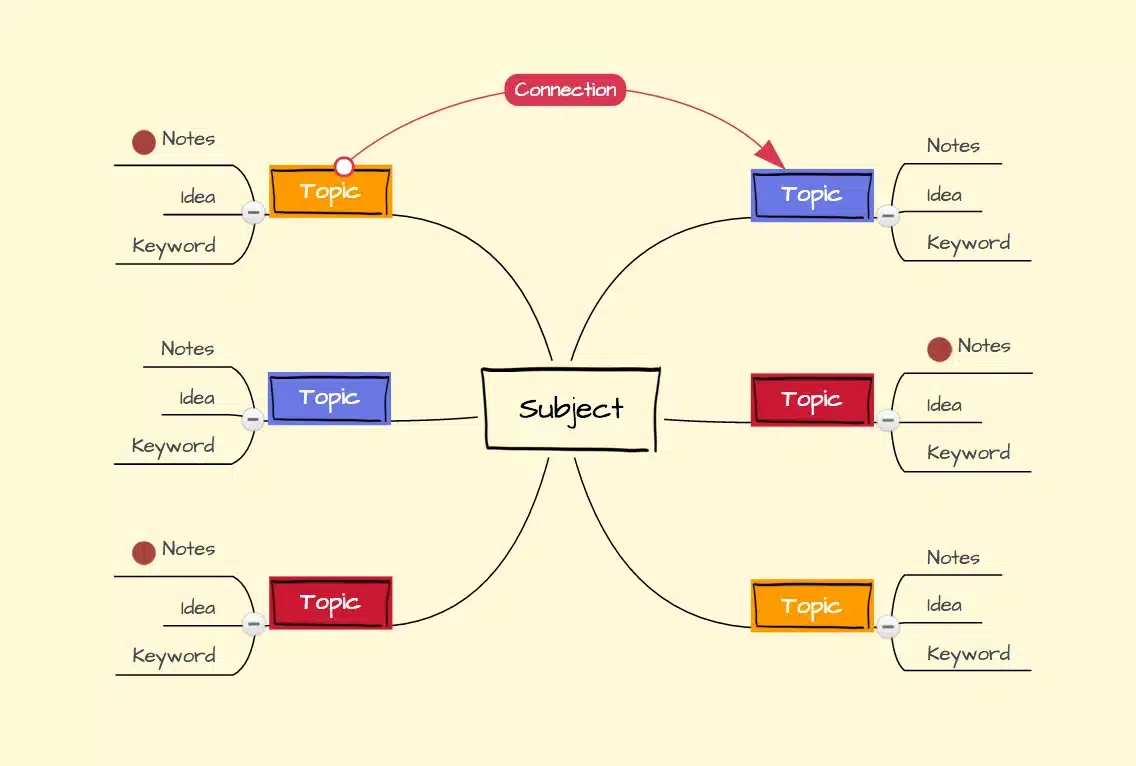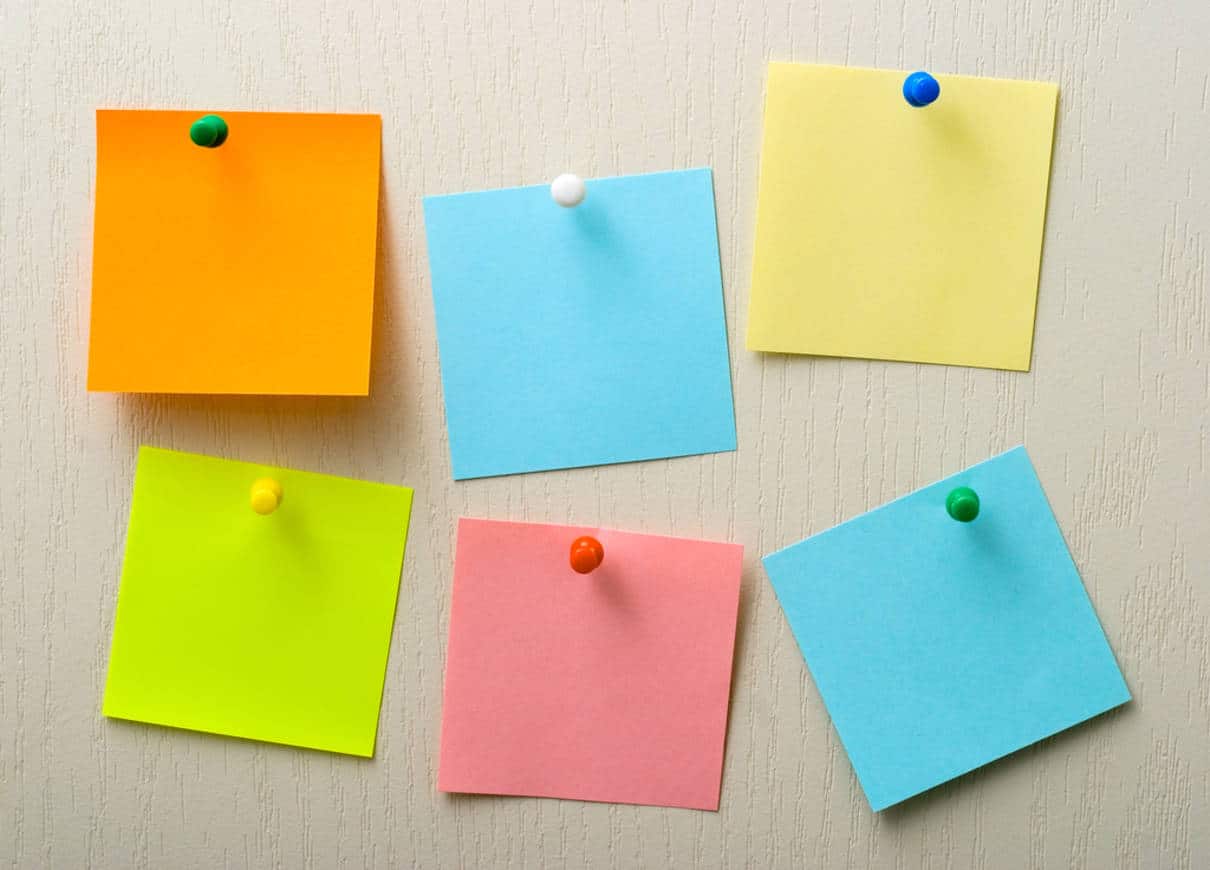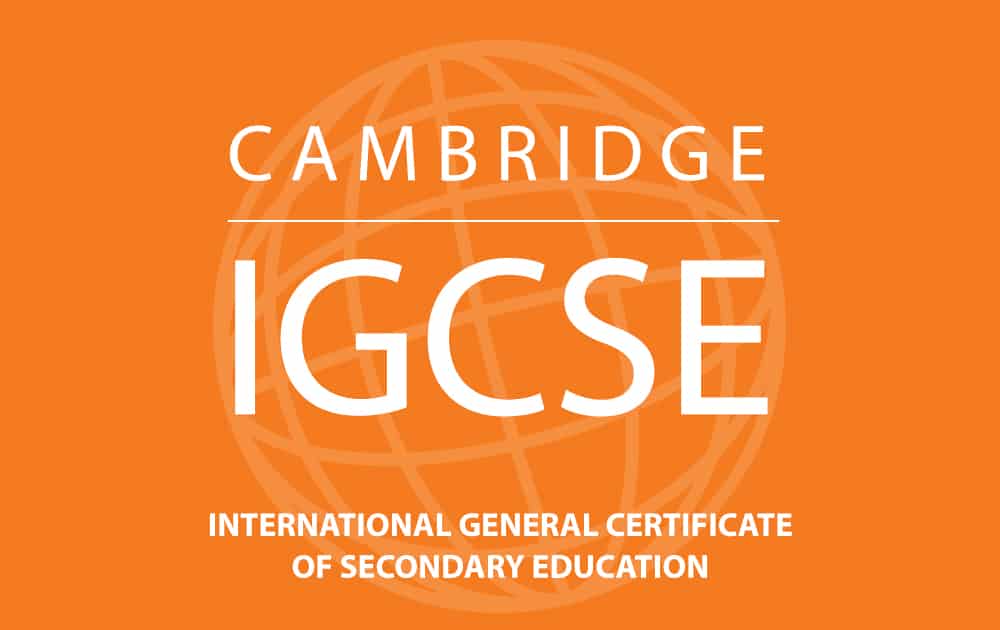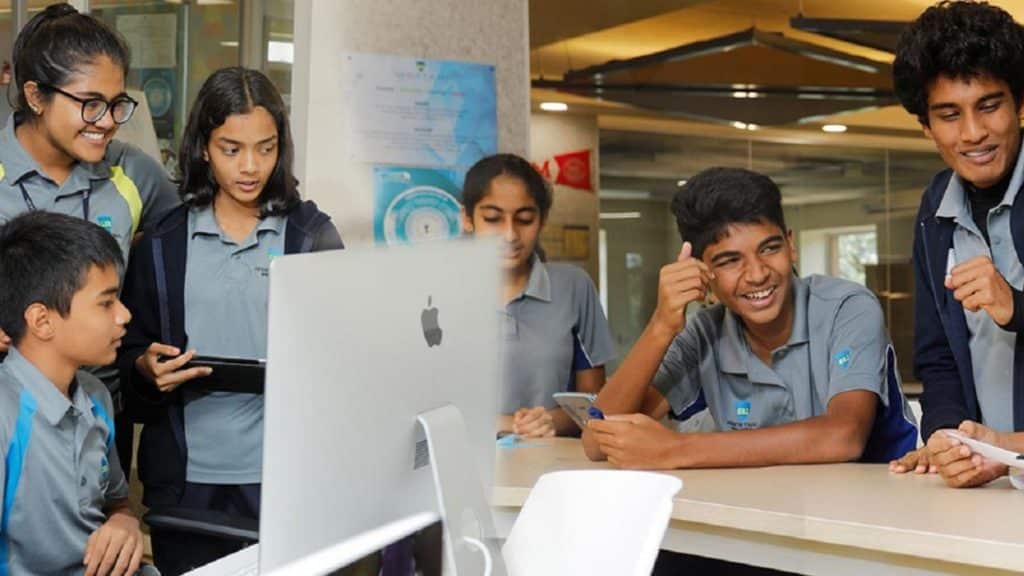เราถูกฝึกให้เรียนรู้แต่ไม่เคยเรียนหนังสือเพื่อเตรียมสอบ มีเทคนิค เครื่องมือ และกลยุทธ์ในการเรียนมากมาย วันนี้เราจะเปิดเผยกลยุทธ์การทบทวนที่ได้ผลที่สุดสำหรับนักเรียน พร้อมเน้นย้ำถึงประโยชน์และความสามารถในการปรับใช้กลยุทธ์เหล่านี้เพื่อบรรลุเป้าหมายการทบทวนที่หลากหลาย อ่านต่อไปเพื่อดูคำอธิบายภาพของกลยุทธ์การทบทวนบางส่วนเหล่านี้!
#1 || แผนที่ความคิด
เราได้รับการฝึกให้สร้างแผนที่ความคิดเพื่อสรุปและเชื่อมโยงบทอื่นๆ ของวิชาต่างๆ เมื่อเรายังเด็ก แผนที่ความคิดมีประโยชน์ในการสรุปและประเมินความรู้ในวิชาที่เกี่ยวข้อง

เมื่อใดควรใช้ Mindmap เพื่อทบทวนบทเรียนของนักเรียน?
เนื่องจากแผนผังความคิดเป็นเครื่องมือทบทวนที่เน้นการสรุป ผู้เรียนจึงควรใช้แผนผังความคิดนี้ในตอนต้นและตอนท้ายของแต่ละบท แผนผังความคิดในตอนต้นจะช่วยให้ผู้เรียนเข้าใจว่าหัวข้อต่างๆ เกี่ยวข้องกันอย่างไร และยังช่วยให้แสดงแนวคิดทั้งหมดที่ผู้เรียนอาจพบเจอได้อีกด้วย
เซสชั่นการทบทวนจะเสร็จสิ้นด้วยแผนผังความคิด แผนผังความคิดสรุปสุดท้ายนี้ควรทำโดยไม่มีเอกสารอ้างอิงใดๆ วาดแผนผังความคิดที่เชื่อมโยงหัวข้อทั้งหมดที่คุณได้เรียนรู้โดยพยายามจดจำให้ได้มากที่สุด สุดท้าย ให้เปรียบเทียบแผนผังความคิดเดิมของคุณกับแผนผังนี้เพื่อดูว่าคุณพลาดอะไรไป
#2 || ใช้ Post-it ให้เป็นประโยชน์
คุณสามารถใช้สิ่งนี้เพื่อสรุปและตรวจสอบความเข้าใจทั่วไปของคุณเกี่ยวกับหัวข้อใดหัวข้อหนึ่ง

เมื่อไหร่ควรใช้กระดาษโพสต์อิท?
นักเรียนสามารถใช้โพสต์อิทได้ 2 วิธี
นักเรียนมักใช้กระดาษโน้ตเพื่อทบทวนบันทึกและต้องการเพิ่มข้อมูล หากนักเรียนต้องการจำอะไรบางอย่าง กระดาษโน้ตจะช่วยให้จำได้
ประการที่สอง การใช้โพสต์อิทในลักษณะนี้ได้ผลดีและสนุกสนาน วิธีการใช้โพสต์อิทในลักษณะที่สองนี้ต้องใช้พื้นที่ทำงานที่กว้างขวางหรือผนังขนาดใหญ่ เขียนประเด็นหลักของบทต่างๆ ตามลำดับที่คุณจำได้ (อย่าลืมใช้โพสต์อิทสีต่างๆ!) หากต้องการให้บทหรือเนื้อหาทั้งหมดมีมุมมองที่กว้างและชัดเจน ให้เขียนประเด็นหลักทั้งหมดลงไป
กลยุทธ์นี้น่าเพลิดเพลิน สร้างสรรค์และมีประสิทธิผล
#3 || เอกสารสอบและเฉลย
เอกสารของปีที่แล้วมีความจำเป็นสำหรับการทบทวนข้อสอบครั้งสุดท้าย เนื่องจากเอกสารของปีที่แล้วให้ภาพรวมที่ชัดเจนของรูปแบบการสอบ ช่วยให้นักเรียนเข้าใจถึงข้อสอบได้ดีขึ้น และยังทำหน้าที่เป็น การปฏิบัติ สำหรับนักเรียนทุกคน คำถามในการสอบของปีก่อนๆ มักจะตรวจสอบแนวคิดเดียวกัน ซึ่งสามารถช่วยให้นักเรียนเสริมสร้างแนวคิดและให้แน่ใจว่าพวกเขากำลังทบทวนอย่างถูกต้อง

นักเรียนทุกคนควรทบทวนข้อสอบของปีก่อนๆ ก่อนสอบ ดังนั้นควรฝึกฝนให้มาก!
#4 || เตรียมบัตรคำศัพท์
แฟลชการ์ดเป็นเครื่องมือทบทวนบทเรียนที่ดีที่สุดอย่างหนึ่งสำหรับเด็กๆ แฟลชการ์ดมักใช้เมื่อนักเรียนต้องจดจำข้อมูลจำนวนมาก แฟลชการ์ดช่วยให้จำสิ่งต่อไปนี้ได้:
- สูตรคณิตศาสตร์ที่ยาก
- นิยามของเคมี ชีววิทยา และวิทยาศาสตร์
- กระบวนการหลายขั้นตอน
เมื่อใดจึงควรศึกษาด้วยแฟลชการ์ด
เมื่อคุณมีคำศัพท์ ศัพท์ และขั้นตอนต่างๆ มากมายที่ต้องจดจำ
#5 || สะท้อนความคิด
เทคนิคทบทวนบทเรียนที่ง่ายแต่ได้ผลสำหรับนักเรียน การสะท้อนความคิดช่วยให้นักเรียนเติบโต เข้าใจ และวางแผนทบทวนบทเรียนครั้งต่อไป นักเรียนสามารถประเมินความสามารถในการจำเนื้อหา ความสำเร็จในการทบทวนบทเรียน และความก้าวหน้าโดยรวม

การสังเกตพื้นฐานเหล่านี้ช่วยให้นักเรียนเข้าใจกระบวนการแก้ไขได้ดีขึ้น และปรับเปลี่ยนโดยเร็วที่สุดเพื่อปรับปรุงการเรียนรู้ของพวกเขา
#6 || ความช่วยเหลือเพิ่มเติม
ปรับแต่งหลักสูตรเตรียมสอบ IGCSE ของคุณด้วย วิทยาเขตเสือบทเรียนเหล่านี้เป็นแบบตัวต่อตัวและเปิดสอน 7 วันต่อสัปดาห์ มีบทเรียนสำหรับหลักสูตร IGCSE และการสอบระดับนานาชาติอื่นๆ

เป้าหมายของเราคือการช่วยให้นักเรียนปรับปรุงจุดอ่อนและความคิดของตนเอง
จะปรับปรุงคะแนน IGCSE ของนักเรียนได้อย่างไร?
- ในชั้นเรียน ให้ใช้ตัวอย่างการฝึกฝนเพื่อเน้นย้ำความแม่นยำและประสิทธิภาพ
- อาจารย์ติวเตอร์จะส่งรายงานบทเรียนและการอัปเดตเป็นประจำให้ผู้ปกครองทราบทางอีเมล์
- หัวข้อที่ได้รับการแก้ไข การปรับปรุงที่พบ การกำหนดเป้าหมายช่องว่างความรู้
- แผนการเรียนของนักเรียนแต่ละคน
- คุณได้รับเชิญให้เข้ามา สอนพิเศษตัวต่อตัว หรือเพื่อดำเนินการกับข้อกังวลสุดท้ายก่อนการสอบ








